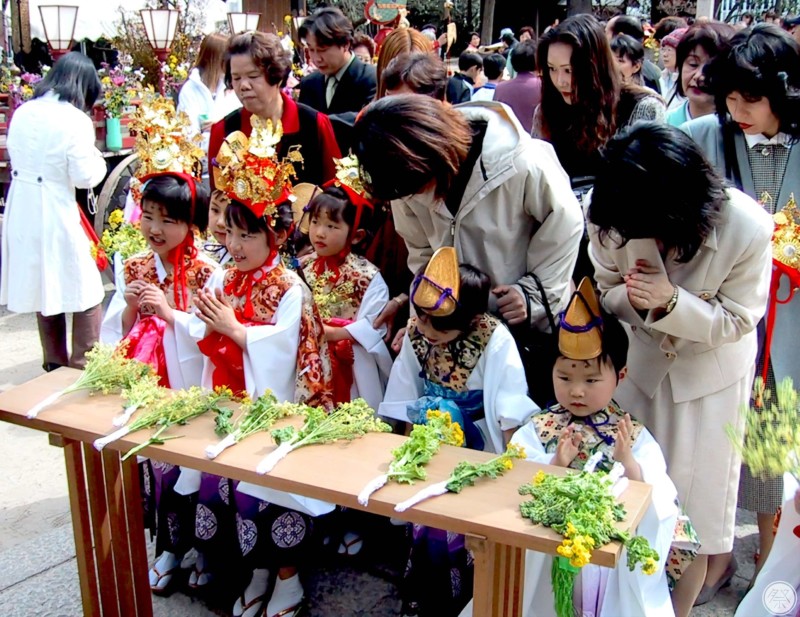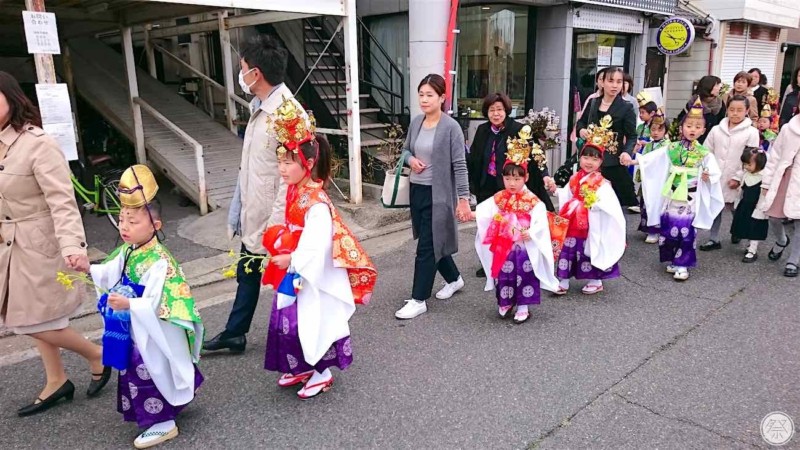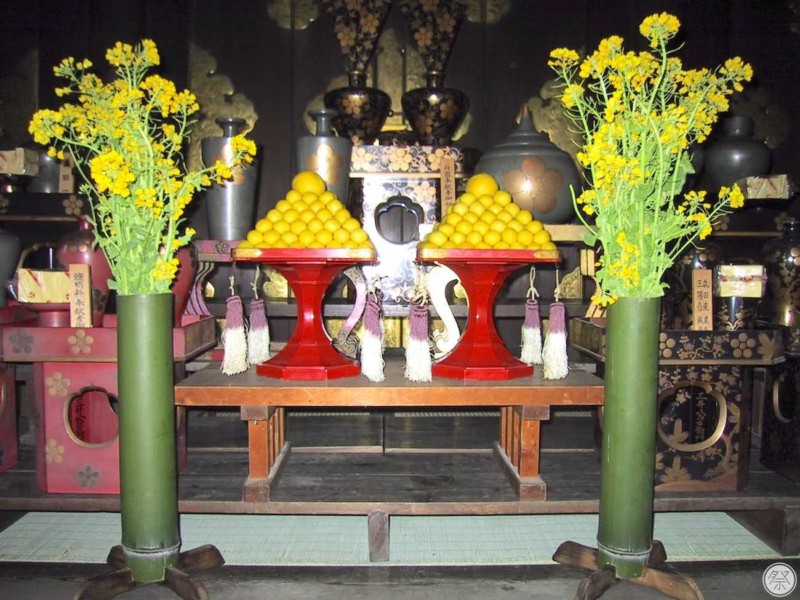The "Natanegokutaisai" is a festival held on March 25th, when rape blossoms bloom in all its glory. "Natane" is rape seed—used for oil and other edible ingredients, yet in Japan rape blossoms have always been a familiar and popular ornamental plant as well, sung in old haiku poetry and in children's songs. The purpose for this festival is to console the spirit of Domyoji Tenmangu Shrine's deity Sugawara no Michizane—a revered poet and politician from the Heian period—by making offerings of rape blossom-colored dango (sweet dumplings), prepared using gardenia nuts as dye. The festival is known and admired in the Kawachi region of Osaka as "Kawachi no harugoto" (the spring event of Kawachi), announcing the arrival of spring. The sweet dumplings are said to be blessed with powers of healing illnesses, and anybody can receive them at the shrine from the 24th (day before the festival) until the 26th. The main attraction of the festival is the children's procession. Young children in their kimono march through the neighborhood making offerings of Natane. This cheerful sight can be seen from 1:00 PM on the day of the festival (25th).


The main attraction of the festival is the children's procession (Chigo-gyoretsu). Children from the age of 3 to 9 or so march the local neighborhood in kimono, in order to bring Domyoji Tenmangu Shrine's deity Sugawara no Michizane offerings of rape blossoms. Any local child experiences this at least once in their childhood, although non-local kids are also able to participate via applying in advance.

Anybody can receive the offered rape blossom colored dango dumplings (Natanegoku). They are recommended as gifts for loved ones, since the dumplings are believed to have powers that heal illnesses (they are sold at a cost of ¥500 for a bag containing 5 dumplings). Natanegoku dumplings are available not only on the day of the festival, but during the 24th through the 26th.
Sugawara no Michizane was a politician who existed more than 1,100 years ago. When he was demoted and sent away to the province as a result of political strife, he stopped by at Domyoji where his aunt and priestess Kakujini lived. It is said that it was a warm day after the spring season had just arrived, and rape blossoms were blooming all over the area. Even after Michizane left, Kakujini made daily offerings of food to the alter, praying for his safety on the road. When the offered rice was milled and turned into a yellow sweet dumpling, the word got out that it cured illnesses. This was how the festival began, eventually attracting visitors from all areas.
Please be mindful that this is a sacred event, and do not forget to make a prayer in respect to the shrine's deities.
Access to Domyoji Tenmangu Shrine
1-16-40 Domyoji, Fujiidera, Osaka
[Nearest station]
Domyoji Station, Kintetsu Minami Osaka Line
3 min walk from Domyoji Station